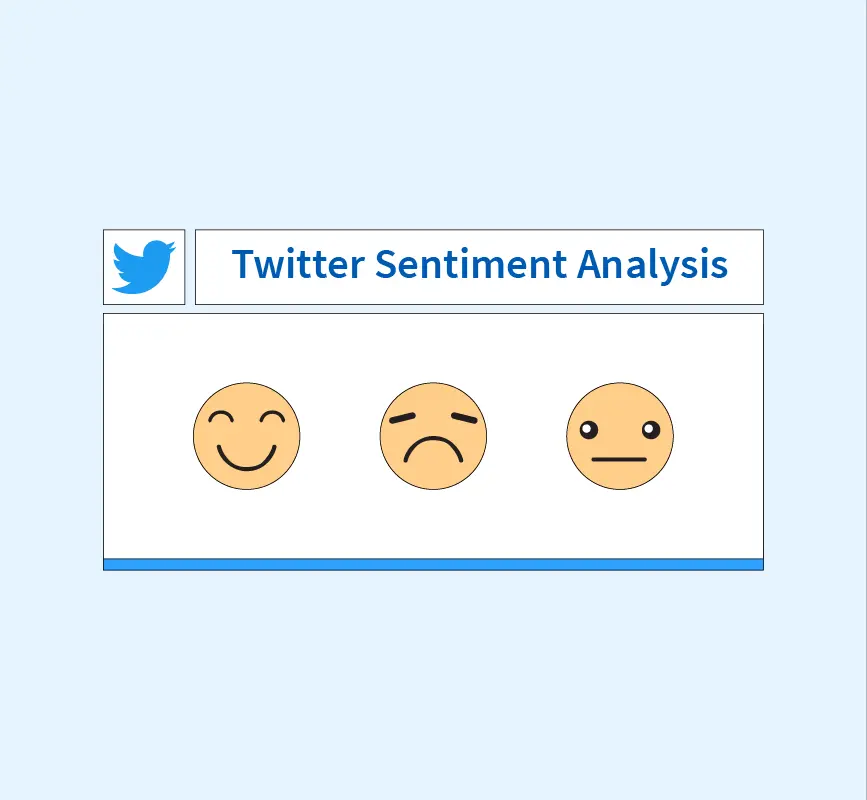AI bias refers to systematic errors in machine learning models that result in unfair treatment of certain groups or individuals. As AI systems influence critical decisions in healthcare, hiring, and finance, addressing bias is crucial. Unbiased AI promotes fairness, enhances trust, and ensures that technological advancements benefit all members of society equally.
What is AI Bias?
AI bias refers to the presence of systematic errors in machine learning models that result in unfair treatment of certain groups or individuals. It occurs when AI systems make decisions that reflect pre-existing prejudices, leading to discriminatory outcomes in areas like hiring, lending, and law enforcement.
Bias often arises during the data collection process, where datasets may lack diversity or contain historical biases. For instance, training an AI model with data from a single demographic can lead to biased predictions when applied to broader populations. Model training can further amplify these biases if algorithms overfit to skewed data patterns. Additionally, deployment bias occurs when AI systems face real-world conditions that differ from their training environment, leading to inaccurate or unfair decisions.
Key terms include algorithmic bias, where the model’s design introduces bias, and data bias, where flawed or incomplete data results in skewed outcomes. Addressing these issues is essential to developing fair AI systems that provide equitable solutions and avoid perpetuating societal inequalities.
Real-World Examples of AI Bias
Racial Bias in Healthcare Algorithms
AI algorithms used in healthcare have exhibited racial bias, affecting patient care. A notable example is an AI system used to allocate healthcare resources, which prioritized white patients over Black patients despite similar health conditions. This occurred because the algorithm used historical healthcare costs as a proxy for health needs, overlooking systemic disparities in healthcare access for minority groups.
Gender Bias in Recruitment Algorithms
Amazon’s AI-based recruitment tool demonstrated gender bias by favoring male candidates over female applicants. The algorithm, trained on past hiring data, learned to prefer resumes with words more commonly found in male applicants’ resumes, such as “executed” and “captured,” while penalizing those with terms like “women’s.” This bias emerged because historical hiring practices reflected gender imbalances in tech roles, and the AI perpetuated these biases in its selection process.
Facial Recognition Bias
Facial recognition systems have been criticized for misidentifying minorities, leading to wrongful accusations and surveillance issues. Studies found that algorithms from leading tech companies had higher error rates when identifying people of color, particularly Black and Asian individuals, compared to white individuals. This bias arises from training datasets dominated by images of lighter-skinned individuals, resulting in inaccurate recognition for minorities.
Socioeconomic Bias in Lending Systems
AI-powered credit scoring models have shown socioeconomic bias by unfairly disadvantaging individuals from lower-income backgrounds. Algorithms trained on historical financial data have denied loans to qualified applicants based on zip codes, employment history, or education levels, all of which can be proxies for socioeconomic status. This bias has led to discriminatory lending practices, widening the gap in financial inclusion.
Sources of AI Bias
AI bias often originates from multiple sources within the machine learning pipeline, leading to skewed outcomes and unfair decisions.
Data Collection Bias arises when datasets are incomplete, skewed, or non-representative of the entire population. For example, facial recognition systems trained on predominantly white faces struggle to accurately identify people of color, resulting in higher misidentification rates for minorities.
Labeling Bias occurs when human annotators introduce subjective opinions or errors during data labeling. In sentiment analysis, labels influenced by personal biases can cause the model to misinterpret cultural nuances or emotional tones, affecting its accuracy and fairness.
Algorithmic Bias is embedded in the design and architecture of machine learning models. Models optimized for certain performance metrics may unintentionally favor specific groups, leading to biased predictions. For instance, hiring algorithms trained on historical data reflecting gender imbalances can continue to favor male candidates.
Deployment Bias emerges when AI systems are deployed in real-world environments that differ from their training settings. A predictive policing model trained on urban crime data may fail when applied to suburban areas, amplifying existing disparities and reinforcing stereotypes.
How AI Bias Reflects Societal Biases?
AI bias often mirrors existing societal inequalities, as machine learning models learn from historical data embedded with human prejudices. When datasets reflect societal disparities—such as racial, gender, or socioeconomic inequalities—AI systems can inadvertently perpetuate these biases in their predictions and decisions.
For example, biased data from historically discriminatory hiring practices can lead AI recruitment tools to favor certain demographics, reinforcing workplace inequalities. Similarly, facial recognition algorithms trained on predominantly lighter-skinned faces often misidentify minorities, highlighting racial biases in AI applications.
Biased AI systems can also reinforce harmful stereotypes, such as associating certain job roles with specific genders or ethnicities, leading to unfair outcomes and social stigmatization.
The ethical concerns surrounding AI bias are profound, as biased algorithms can result in discriminatory practices, reduced trust in AI technologies, and legal challenges, emphasizing the need for fair and inclusive AI development.
Risks and Consequences of AI Bias
AI bias poses significant risks, particularly when biased algorithms influence critical decisions in areas such as hiring, lending, and law enforcement.
Discrimination in Decision-Making is one of the most serious consequences, as biased AI systems can lead to unfair treatment of individuals based on race, gender, or socioeconomic status. For instance, biased hiring algorithms may systematically reject qualified candidates from marginalized groups, while biased lending systems may deny loans to low-income applicants, further deepening existing inequalities.
Loss of Trust in AI Systems is another major risk. High-profile incidents of AI bias have led to growing public skepticism about the fairness and reliability of AI technologies. Users and stakeholders are less likely to adopt AI solutions if they perceive them as biased or unjust.
Legal and Regulatory Implications also arise when biased AI models violate anti-discrimination laws and regulatory standards. Organizations deploying biased algorithms risk legal penalties, financial losses, and reputational damage. Regulatory bodies worldwide are increasingly focusing on AI governance, emphasizing the need for transparent, accountable, and fair AI systems to prevent discriminatory outcomes and ensure compliance.
Principles for Avoiding AI Bias
To avoid AI bias, developers and organizations must adhere to key principles that promote fairness and inclusivity in AI systems.
Fairness ensures that AI models deliver equitable outcomes across all demographic groups. This involves removing discriminatory patterns from training data and ensuring balanced representation.
Accountability holds developers and stakeholders responsible for addressing bias at every stage of AI development. Implementing clear guidelines and regular audits ensures that bias is identified and mitigated promptly.
Transparency emphasizes the need for clear documentation and explainability in AI decision-making processes. Making AI models interpretable allows users to understand how decisions are made and identify potential biases.
Inclusivity involves incorporating diverse perspectives in AI design and development. Engaging multidisciplinary teams and including underrepresented groups during data collection and model training helps create AI systems that reflect broader societal values and minimize bias.
Strategies to Mitigate AI Bias
1. Data Auditing and Cleaning
Regular data audits are essential to detect and remove biased data from training datasets. By thoroughly reviewing data sources, organizations can identify incomplete, skewed, or historically biased datasets and take corrective actions, such as balancing the representation of different demographic groups.
2. Diverse Training Data
Incorporating diverse training data ensures that AI models are exposed to varied perspectives and experiences. Collecting data from different genders, ethnicities, age groups, and socioeconomic backgrounds helps minimize bias and improve model fairness across diverse populations.
3. Algorithm Testing in Real-World Scenarios
Evaluating AI models in real-world settings ensures that they perform equitably across different environments and user groups. Testing models with varied datasets helps identify hidden biases that may not be evident during initial development and training phases.
4. Implementing Human-in-the-Loop Systems
Combining human judgment with AI decision-making helps mitigate bias by allowing human oversight in critical decisions. Human-in-the-loop systems ensure that automated decisions are reviewed and corrected when necessary, reducing the risk of biased outcomes.
5. Continuous Monitoring and Updating
Bias in AI systems can evolve over time, making continuous monitoring and regular updates crucial. Periodic evaluations help detect emerging biases, while updating models with new, diverse data ensures that AI systems remain fair, accurate, and relevant.
Will AI Ever Be Unbiased?
Achieving fully unbiased AI remains a significant challenge due to inherent limitations in data, algorithms, and societal structures. AI systems learn from historical data, which often reflects existing biases, making it difficult to eliminate bias entirely. Additionally, the complexity of machine learning algorithms can obscure how biases are introduced and propagated.
However, ongoing research is focused on bias detection and mitigation. Techniques such as algorithmic fairness frameworks, adversarial debiasing, and explainable AI (XAI) are being developed to identify and correct biases within AI models. Researchers are also exploring methods to ensure more diverse and representative datasets, reducing the risk of biased predictions.
The future of AI holds promise for fair and equitable systems. With continuous advancements in technology, regulatory frameworks, and ethical AI practices, the goal is to create AI models that minimize bias, enhance fairness, and serve diverse populations responsibly.
Summary
AI bias refers to systematic errors in machine learning models that lead to unfair outcomes, often reflecting societal inequalities. Real-world examples, such as biased healthcare algorithms and discriminatory recruitment tools, highlight the critical risks of AI bias, including discrimination, loss of trust, and legal challenges.
Proactively implementing bias mitigation strategies, such as data auditing, diverse training datasets, and continuous monitoring, is essential for developing fair AI systems. As AI continues to shape our world, it is crucial for organizations to adopt responsible AI practices that prioritize fairness, accountability, and inclusivity, ensuring that AI technologies benefit everyone equitably.
References:


